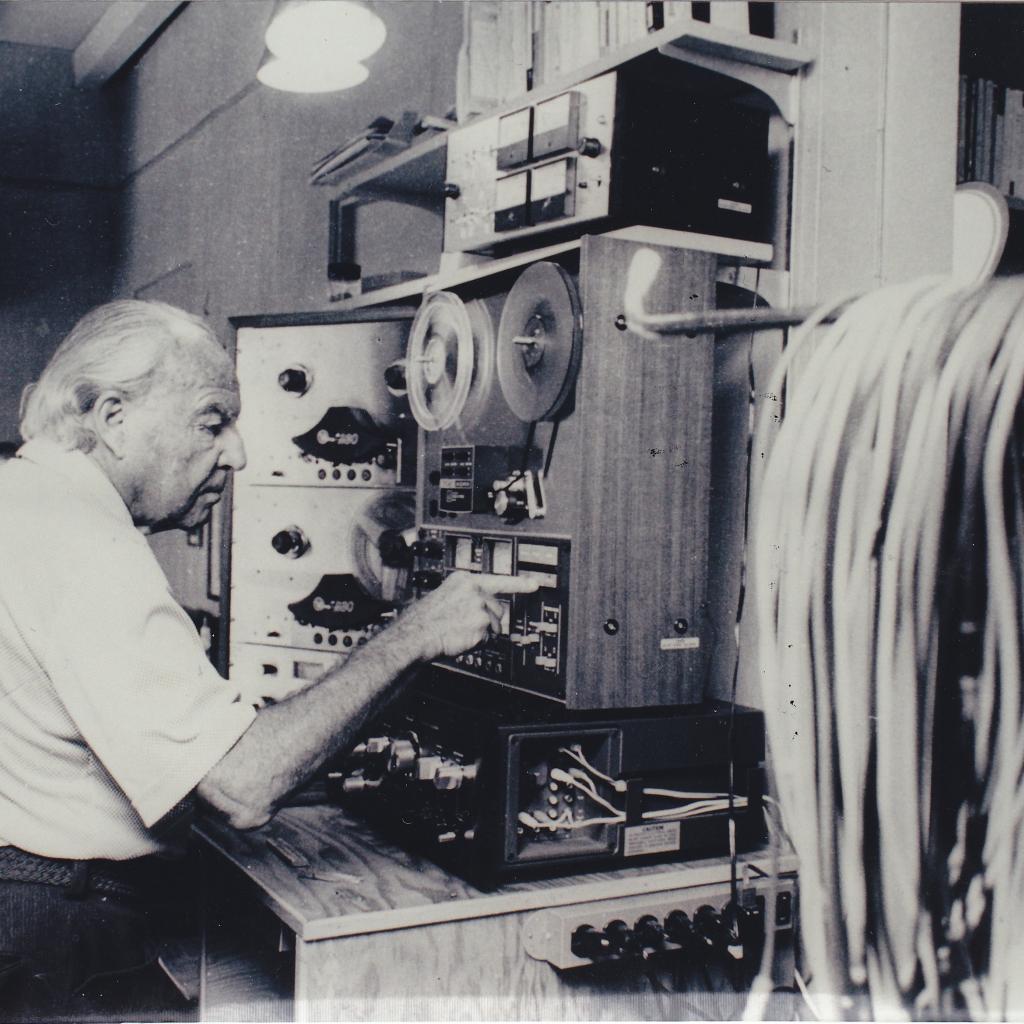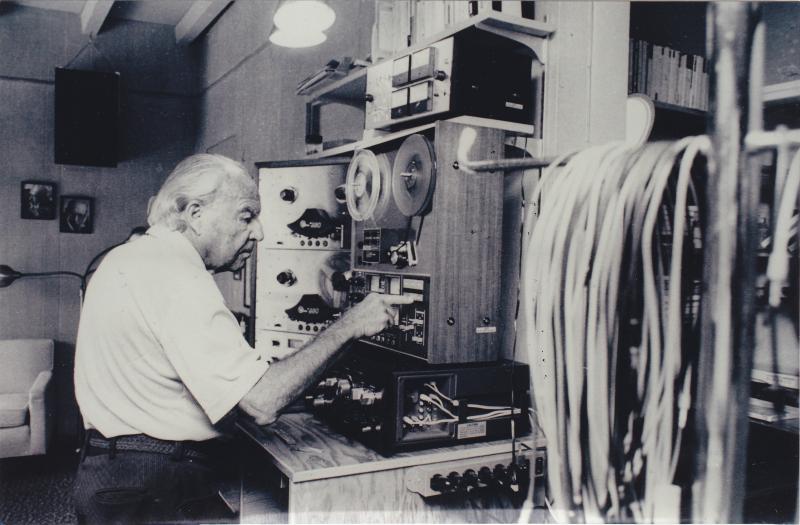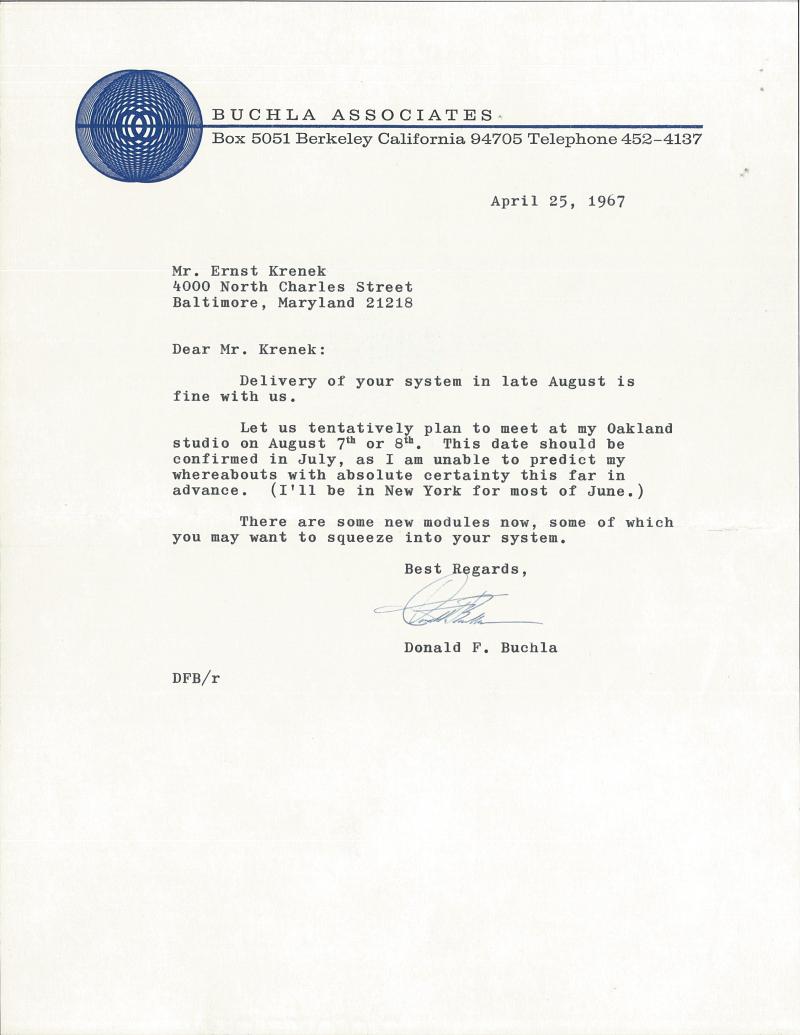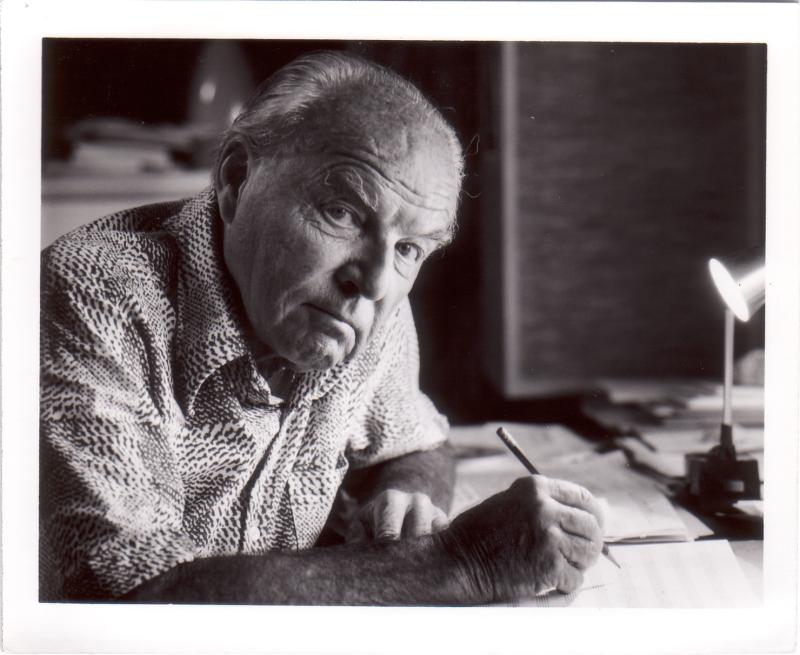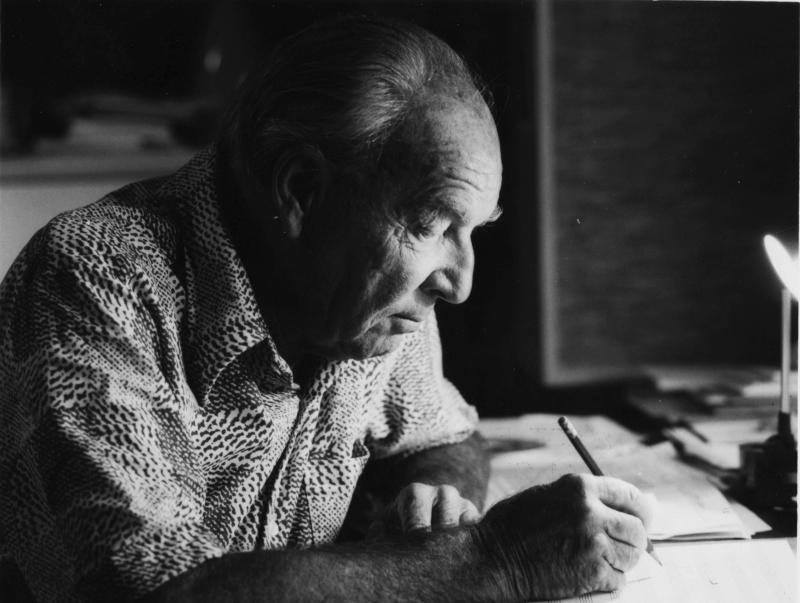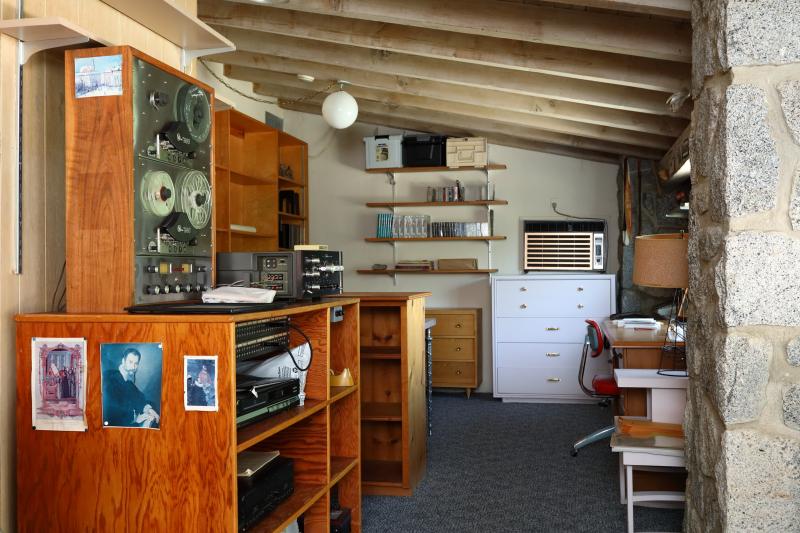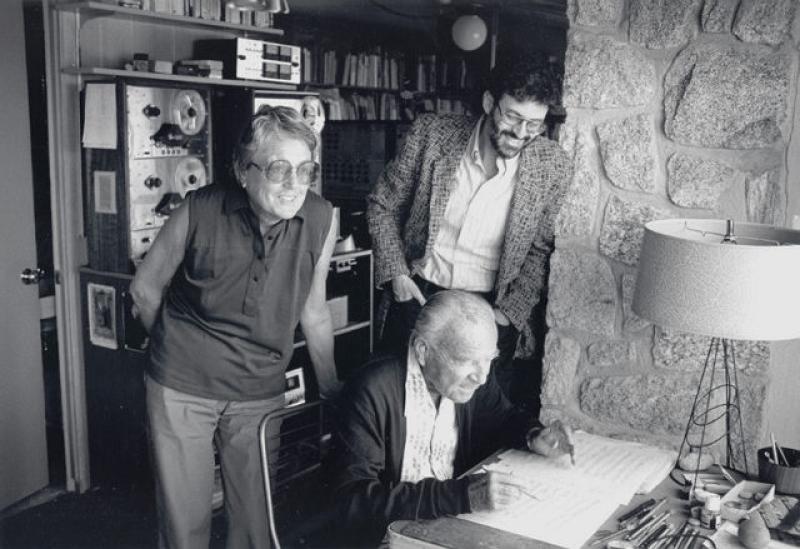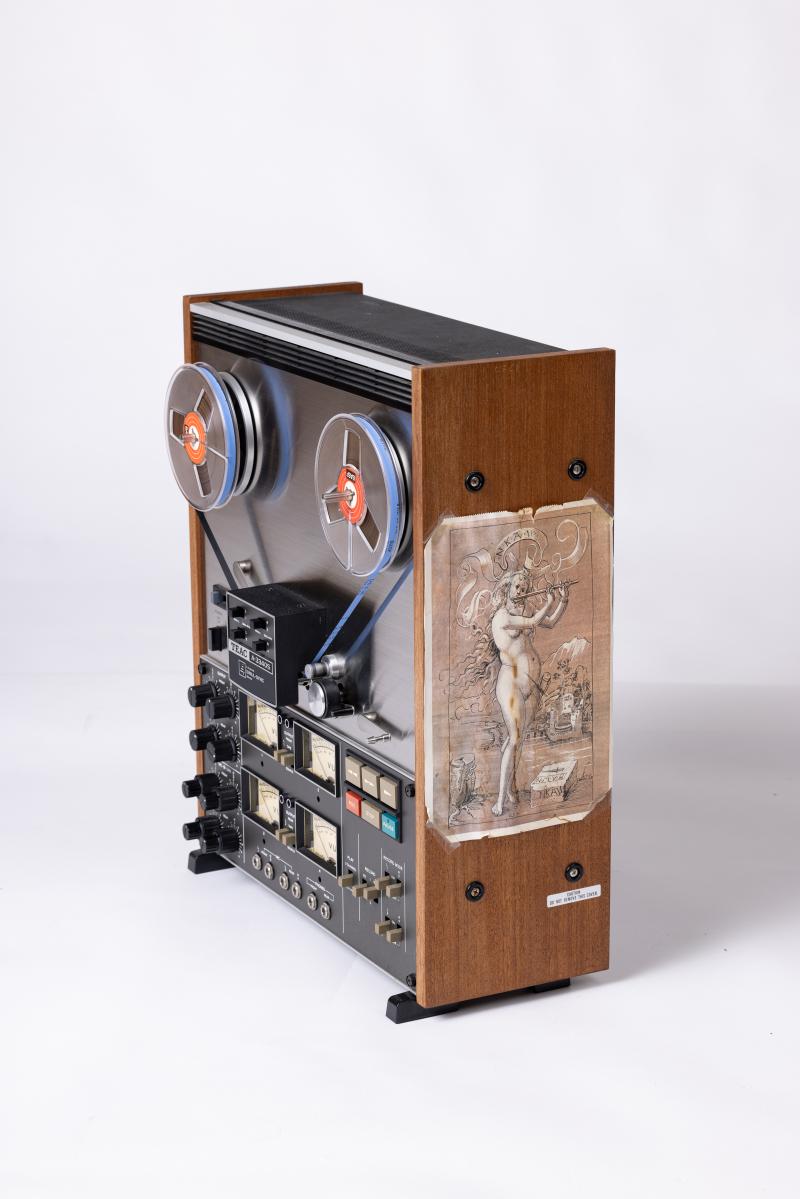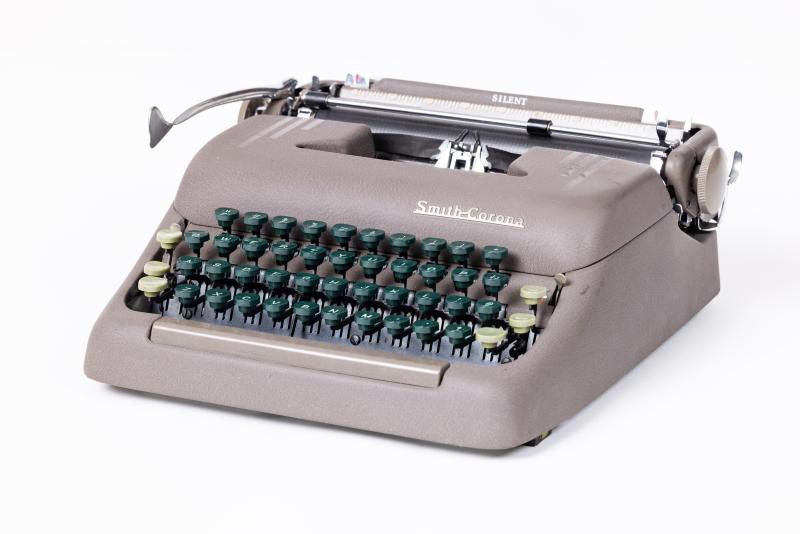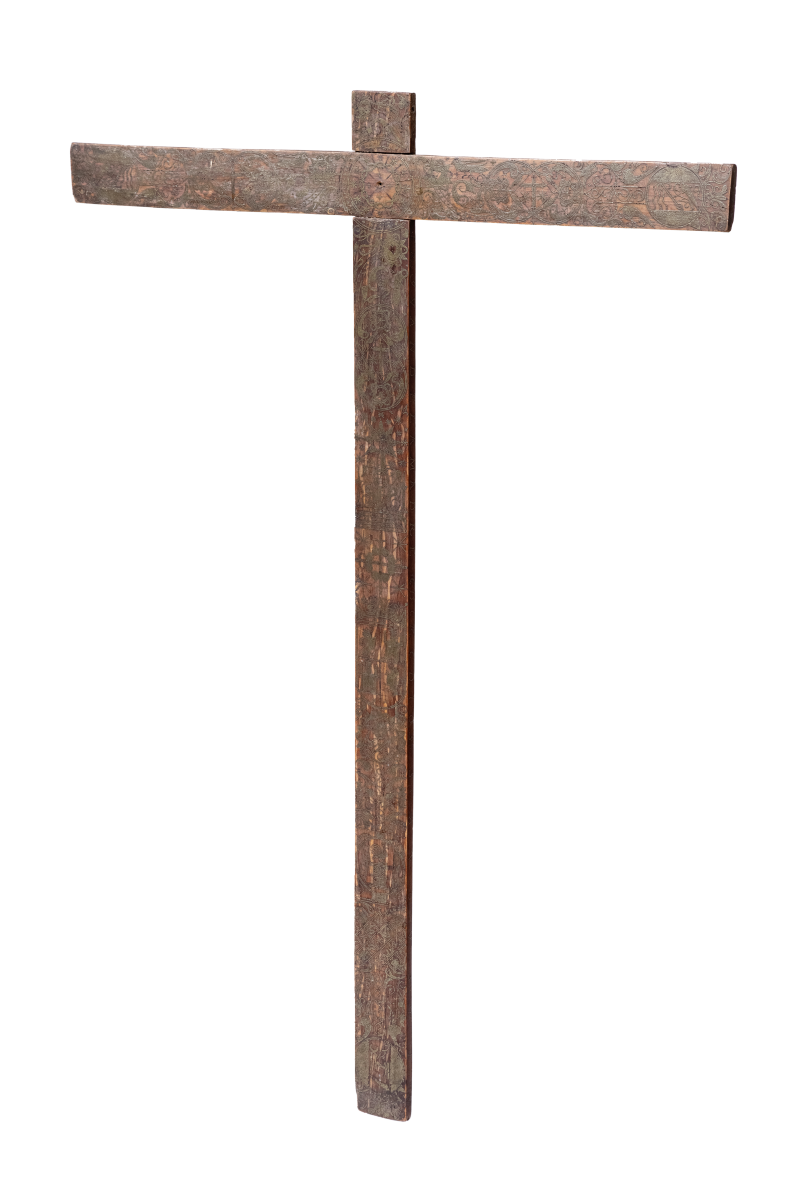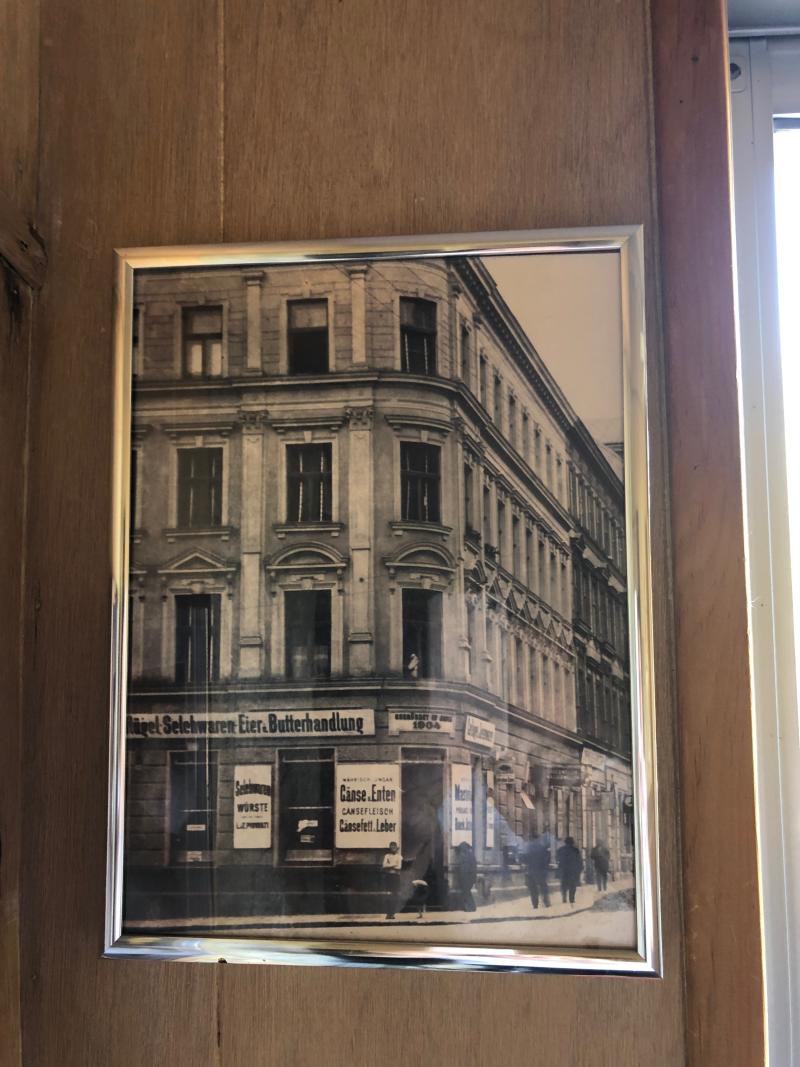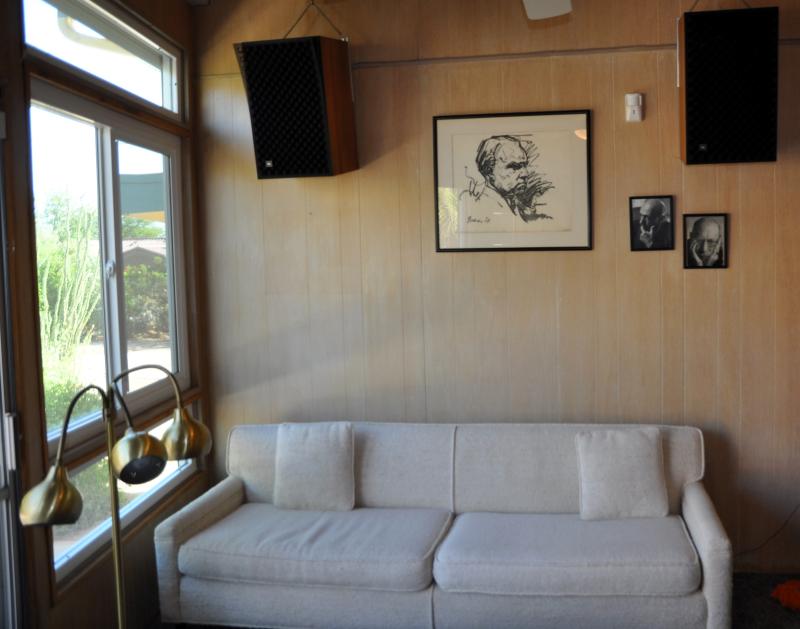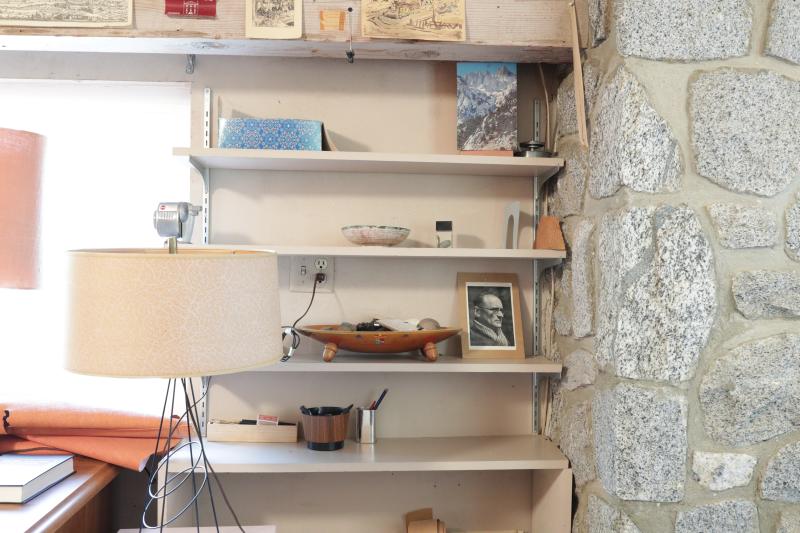In the studio of Ernst Krenek in Palm Springs
The comfortable studio of Ernst Krenek in the house of the Kreneks in Palm Springs was not only a space for creative work for the composer and author but also contained several special treasures.
Next to the entry to the studio a wooden cross from Spain from the 17th century studded with tiny nails was attached to the wall. It was given to Ernst Krenek by the organist Maria Hofer.
In his memoirs Krenek remembers:
“With the Hertzkas there lived a tall, fairly attractive woman of the name of Maria Hofer. […] This Maria was active in Catholic affairs, played the organ (an instrument had been built for her at the house), and composed music of which I do not know anything. At a later date she presented me with a Spanish cross from the seventeenth century, two pieces of dark wood beautifully studded with hundreds of tiny golden looking nails, according to some lettering made by a Spanish monk named Juan de la Madre. I liked this object very much, and I am glad that it is about me again, after I had left it in Vienna with everything else in 1937.”
Not far from the wooden cross a framed portrait photo of Anton Webern with a personal, handwritten dedication hung on the wall: “To his dear friend Ernst Krenek / 1936 / Cordially Anton Webern”. The walls of the studio were also decorated with portrait photos of Schoenberg and Stravinsky, several posters and many post cards. There was also a picture of his birth house in the Argauergasse in the 18th district of Vienna to remind him of his hometown.
The perhaps most apparent treasure in his studio was his Buchla modular synthesizer, series 100, one of the first synthesizer systems for home-use, which Krenek ordered directly from the electronic-pioneer Donald “Don” Buchla. In the letters kept in the archive of the Ernst-Krenek-Institute one can read today, that the single modules of the synthesizer were arranged according to Krenek’s requirements and that the synthesizer together with other equipment, among them a tape machine and an amplifier, was delivered to Palm Springs in November 1967 by Don Buchla himself. The synthesizer system was more expensive than the popular Ford Mustang I at that time, which illustrates the big investment that Krenek made with this electronic instrument. Just a few years later Krenek composed his work “Tape and Double”, op. 207 for two pianos and tape on this machine, finished on January 1, 1970, in Palm Springs.
On his desk, with a view into the desert garden, Krenek had arranged a small collection of stones. He was fascinated by minerals since his childhood. His typewriter by the company Smith Corona and a collection of vinyl records, tapes and books were also kept in his studio. The cozy sitting area with a large window and patio door probably has offered Krenek some relaxing hours.
Many of these objects are displayed in the exhibition “Visiting Ernst Krenek (1900-1991”). A vivid illustration of his studio has recently been added to a virtual tour through the 3D reconstruction of the house of the Kreneks and provided via the large-size touch screen at the Salon Krenek.
Also read the articles “Kitchen uncovered”, “Sun, cactuses and mountains – a visit to the Krenek residence in Palm Springs” and “Go digital – The Krenek residence in Palm Springs will be digitized”.
